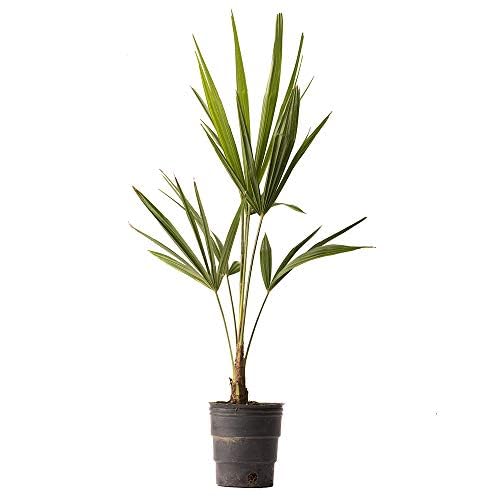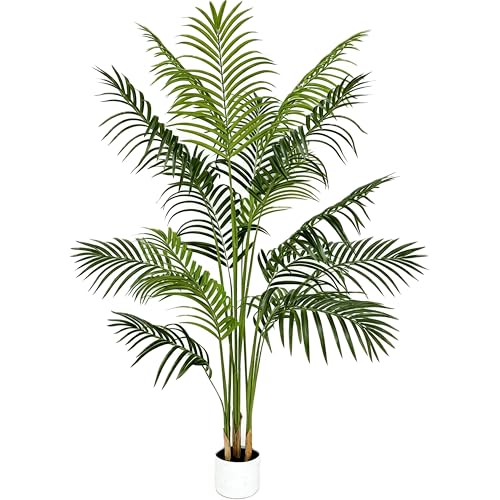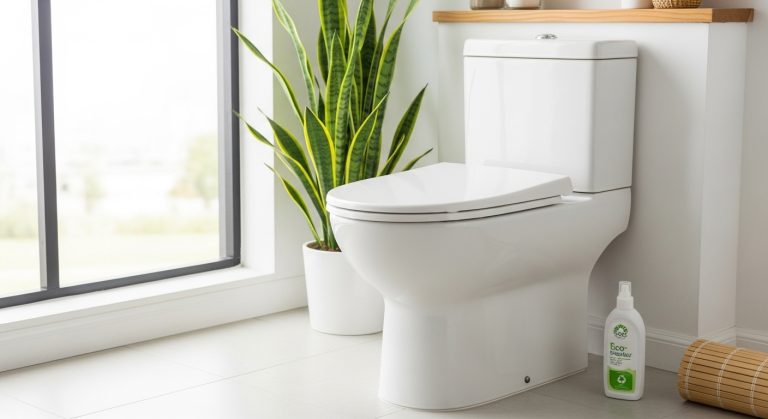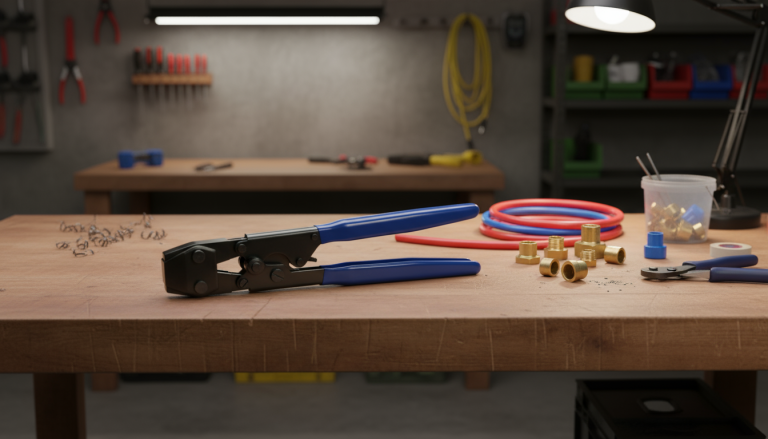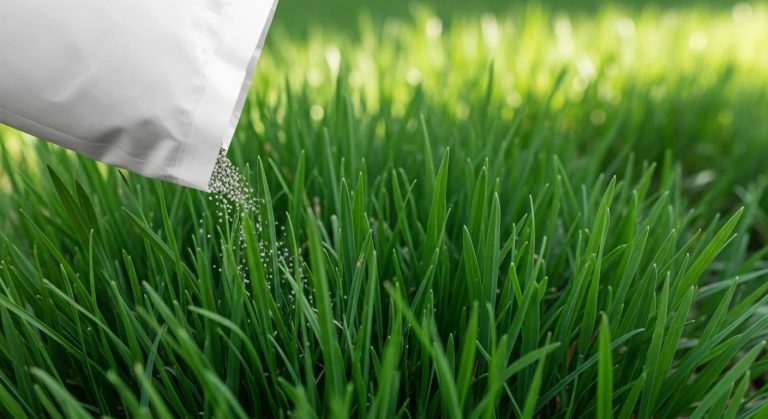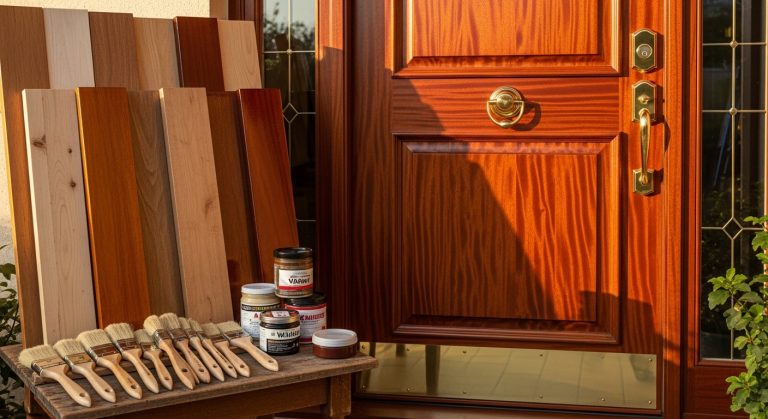Best Palm Trees for Containers: Transform Your Space
Transform your outdoor living space into a tropical paradise with the perfect container palm trees. Whether you have a small balcony, spacious patio, or indoor area, these magnificent plants bring instant exotic appeal to any setting.
The best palm trees for containers include Kentia Palm, Areca Palm, Parlor Palm, Majesty Palm, and Dwarf Palmetto – all known for their slow growth, compact size, and excellent adaptability to confined root spaces. These varieties thrive in pots while maintaining their stunning tropical appearance year-round.
This comprehensive guide reveals the top container palm varieties that will elevate your space from ordinary to extraordinary. Discover which palms suit your specific needs, learn essential care tips, and create your own tropical oasis today.
Key Takeaways
- Choose the right varieties: The top container palm trees include Kentia Palm, Areca Palm, Parlor Palm, Majesty Palm, and Dwarf Palmetto – all selected for their compact size, slow growth, and excellent adaptability to confined root spaces.
- Container selection matters: Use pots that are 2-3 inches wider than the root ball with multiple drainage holes, and choose materials like fiberglass for durability or lightweight options for portability.
- Master the watering technique: Practice deep, infrequent watering by thoroughly soaking the soil until water drains from the bottom, then allowing it to dry slightly before the next application.
- Provide optimal light conditions: Most container palms thrive in bright, indirect sunlight with morning sun and afternoon shade, making them perfect for both indoor and outdoor placement.
- Maintain proper humidity: Indoor palms require increased humidity through misting, humidity trays, or grouping plants together to create beneficial microclimates.
- Follow seasonal care patterns: Adjust watering and fertilization schedules seasonally – increase care during spring and summer growth periods, then reduce maintenance during winter dormancy.
- Embrace the portability advantage: Container palms offer unmatched versatility for moving plants indoors during harsh weather, rearranging outdoor layouts, or relocating to different areas as your space needs change.
Why Choose Container Palm Trees?
Container palm trees offer unmatched versatility for modern gardening enthusiasts. These magnificent plants adapt beautifully to confined spaces while delivering the same tropical impact as their ground-planted counterparts.
The portability advantage cannot be overstated. Move your palms indoors during harsh weather, rearrange your outdoor layout seasonally, or relocate them to different areas as your landscaping needs change.
Space efficiency makes container palms perfect for urban dwellers. Small balconies, rooftops, and compact patios can accommodate these stunning plants without requiring extensive garden beds or permanent installations.
Benefits of Container Growing
Container cultivation provides superior control over growing conditions. You can adjust soil composition, drainage, and positioning to create optimal environments for your specific palm varieties.
Protection from extreme weather becomes effortless with portable containers. Simply move sensitive varieties indoors during winter months or severe storms, ensuring year-round plant health and longevity.
Reduced maintenance requirements make container palms ideal for busy lifestyles. Controlled environments minimize pest issues, eliminate weeding concerns, and simplify fertilization schedules.
Ideal Growing Conditions
Most container palms thrive in bright, indirect sunlight with consistent moisture levels. Position containers where they receive morning sun and afternoon shade for optimal growth patterns.
Well-draining soil prevents root rot while maintaining necessary moisture retention. Use specialized palm potting mixes or create custom blends with organic matter and drainage materials.
Consistent temperatures between 65-80°F promote healthy growth. Indoor cultivation allows precise climate control, while outdoor containers benefit from seasonal protection strategies.
Top 5 Best Palm Trees for Containers
Kentia Palm (Howea forsteriana)
The Kentia Palm stands as the ultimate container palm for both beginners and experienced gardeners. This slow-growing beauty develops elegant arching fronds that create stunning visual impact in any setting.
Mature height reaches 6-10 feet in containers, making it perfect for larger spaces without overwhelming smaller areas. The single trunk design provides clean, architectural lines that complement modern décor styles.
Low maintenance requirements make Kentia palms incredibly forgiving. They tolerate lower light conditions, irregular watering schedules, and indoor air quality better than most palm varieties.
Young plants prefer partial shade environments, while mature specimens can handle full sun exposure. This adaptability makes them suitable for various indoor and outdoor locations throughout their lifespan.
Areca Palm (Dypsis lutescens)
Areca Palms bring tropical elegance with their distinctive clustering growth pattern. Multiple stems emerge from the base, creating full, lush appearances that fill containers beautifully.
Golden-yellow stems provide unique visual interest that distinguishes Areca palms from other varieties. The feathery fronds create gentle movement in breezes, adding dynamic elements to static spaces.
Fast growth rates allow quick establishment in new containers. Expect 6-12 inches of annual growth under optimal conditions, making these palms excellent choices for impatient gardeners.
Indoor air purification capabilities make Areca palms functional as well as beautiful. They effectively remove common household toxins while adding humidity to dry indoor environments.
Parlor Palm (Chamaedorea elegans)
The Parlor Palm earned its reputation as the perfect indoor palm through decades of reliable performance. This compact variety rarely exceeds 4 feet in containers, making it ideal for smaller spaces.
Shade tolerance sets Parlor palms apart from sun-loving varieties. They thrive in north-facing windows, dimly lit corners, and areas with limited natural light exposure.
Delicate fronds create soft, graceful silhouettes that complement both traditional and contemporary interior designs. The fine texture provides excellent contrast against bold architectural elements.
Slow growth patterns mean minimal repotting requirements. A single container can house a Parlor palm for 3-4 years before size upgrades become necessary.
Majesty Palm (Ravenea rivularis)
Majesty Palms command attention with their impressive fronds and stately presence. These fast-growing specimens can reach 8-10 feet in large containers, creating dramatic focal points.
Graceful arching fronds span 3-4 feet, requiring adequate space for proper development. Position containers where fronds won’t be damaged by foot traffic or furniture placement.
Higher maintenance needs include consistent moisture, humidity, and bright light requirements. Successful Majesty palm cultivation rewards dedicated gardeners with spectacular results.
Tropical authenticity makes Majesty palms perfect for creating resort-style atmospheres. Their impressive size and classic palm appearance instantly transform ordinary spaces into exotic retreats.
Dwarf Palmetto (Sabal minor)
Dwarf Palmettos offer unique fan-shaped fronds that distinguish them from feather-leafed varieties. These hardy palms tolerate cooler temperatures better than most tropical species.
Compact growth habits keep mature plants under 5 feet tall, making them suitable for smaller containers and limited spaces. The clumping growth pattern creates full, dense appearances.
Cold hardiness extends growing zones for outdoor container cultivation. Dwarf Palmettos survive temperatures down to 10°F, allowing year-round outdoor placement in temperate climates.
Low water requirements make these palms excellent choices for drought-prone areas or gardeners who prefer minimal maintenance routines.
Container Selection and Setup
Choosing the Right Container Size
Proper container sizing directly impacts palm health and growth potential. Select pots that are 2-3 inches wider than the root ball and provide adequate depth for horizontal root development.
Drainage capabilities rank as the most critical container feature. Multiple drainage holes prevent water accumulation that leads to root rot and other moisture-related problems.
Material considerations affect both aesthetics and functionality. Fiberglass containers offer durability and insulation, while ceramic pots provide classic appeal but require careful winter protection.
Weight factors become important for portable applications. Consider lightweight materials for containers that will be moved frequently or positioned on elevated surfaces.
Soil Requirements
Well-draining potting mix forms the foundation of successful container palm cultivation. Avoid heavy garden soil that compacts in containers and restricts root development.
Organic matter content should comprise 30-40% of the soil mixture. Compost, peat moss, or coconut coir improve moisture retention while maintaining proper drainage characteristics.
pH levels between 6.0-7.0 provide optimal nutrient availability for most palm varieties. Test soil regularly and adjust with lime or sulfur as needed to maintain proper acidity.
Fertilizer integration can be incorporated during initial potting. Slow-release palm fertilizers provide consistent nutrition without risk of burning sensitive root systems.
Drainage and Watering Systems
Proper drainage layers prevent water accumulation in container bottoms. Add 2-3 inches of gravel, broken pottery, or drainage stones before adding potting mix.
Watering frequency depends on container size, plant size, and environmental conditions. Check soil moisture 2 inches below the surface to determine watering needs.
Consistent moisture levels promote healthy growth without waterlogging. Allow soil to dry slightly between waterings but never let it become completely dry.
Drainage monitoring helps prevent overwatering issues. Ensure excess water flows freely from drainage holes and doesn’t accumulate in saucers or trays.
Essential Care and Maintenance
Watering Guidelines
Deep, infrequent watering promotes healthy root development in container palms. Water thoroughly until excess drains from the bottom, then allow soil to dry slightly before the next application.
Seasonal adjustments accommodate changing growth patterns and environmental conditions. Reduce watering frequency during winter months when growth slows and evaporation rates decrease.
Water quality considerations affect long-term plant health. Use filtered or rainwater when possible, as palms are sensitive to chlorine and fluoride found in tap water.
Humidity maintenance becomes crucial for indoor palms. Mist fronds regularly or use humidity trays to maintain optimal moisture levels around the plant.
Light Requirements
Bright, indirect light suits most container palm varieties. Position plants near windows with filtered sunlight or provide supplemental artificial lighting for indoor cultivation.
Gradual light transitions prevent shock when moving palms between indoor and outdoor locations. Slowly acclimate plants to new light conditions over 7-10 days.
Seasonal light changes require positioning adjustments throughout the year. Monitor plant response and relocate containers as needed to maintain optimal light exposure.
Artificial lighting options extend growing possibilities for indoor palms. LED grow lights provide full-spectrum illumination for areas with limited natural light.
Fertilization Schedule
Regular feeding supports healthy growth and vibrant foliage color. Apply balanced palm fertilizer every 2-3 months during the growing season for optimal results.
Slow-release fertilizers provide consistent nutrition without frequent applications. These products reduce maintenance requirements while ensuring steady nutrient availability.
Micronutrient supplements address specific palm nutritional needs. Manganese, iron, and magnesium deficiencies commonly affect container palms and require targeted treatment.
Organic alternatives include compost tea, fish emulsion, and kelp meal applications. These natural options provide gentle nutrition while improving soil structure and microbial activity.
Pruning and Maintenance
Minimal pruning maintains palm health and appearance. Remove only brown, damaged, or completely yellow fronds to prevent nutrient drain and disease issues.
Proper cutting techniques prevent damage to the trunk and remaining fronds. Use clean, sharp tools and cut fronds close to the trunk without damaging the main stem.
Regular cleaning keeps fronds dust-free and healthy. Wipe leaves with damp cloths or rinse with gentle water spray to maintain optimal photosynthesis.
Pest monitoring helps identify problems early. Check regularly for spider mites, scale insects, and other common palm pests that thrive in container environments.
Seasonal Care Considerations
Spring Preparation
Repotting activities begin in early spring when new growth starts. Check root systems and upgrade container sizes as needed to accommodate expanding root balls.
Fertilization programs resume with the onset of active growth. Begin regular feeding schedules and monitor plant response to nutritional supplements.
Outdoor transition requires gradual acclimation for indoor palms. Slowly introduce plants to outdoor conditions over 10-14 days to prevent shock and damage.
Pest prevention measures become important as temperatures warm. Inspect plants thoroughly and treat any issues before they become established problems.
Summer Management
Increased watering accommodates higher temperatures and faster growth rates. Monitor soil moisture more frequently and adjust watering schedules accordingly.
Heat protection prevents stress during extreme temperature periods. Provide afternoon shade or move containers to cooler locations during heat waves.
Humidity maintenance becomes challenging in hot, dry conditions. Increase misting frequency and consider grouping plants together to create beneficial microclimates.
Growth monitoring helps identify rapid development that may require container upgrades. Fast-growing varieties may need larger pots mid-season.
Fall Transition
Gradual reduction in watering and fertilization prepares palms for winter dormancy. Slowly decrease application frequency as growth rates decline.
Indoor preparation begins for cold-sensitive varieties. Clean plants thoroughly and inspect for pests before bringing them inside for winter protection.
Container protection becomes important for outdoor palms. Insulate pots with bubble wrap or move them to protected locations to prevent root freezing.
Maintenance completion includes final pruning and cleaning before winter. Remove any damaged fronds and ensure plants are healthy before dormant season.
Winter Care
Reduced watering prevents root rot during slower growth periods. Allow soil to dry more thoroughly between waterings while maintaining basic moisture levels.
Indoor positioning maximizes available light during shorter days. Move containers closer to windows or supplement with artificial lighting as needed.
Temperature stability prevents stress from fluctuating conditions. Avoid placing palms near heating vents, drafty windows, or frequently opened doors.
Dormancy respect means avoiding fertilization and major disturbances. Allow plants to rest naturally and resume active care in spring.
Common Problems and Solutions
Yellowing Fronds
Natural aging causes older fronds to yellow and die periodically. This normal process requires no intervention except removal of completely brown fronds.
Overwatering symptoms include yellowing from the base upward, often accompanied by soft, mushy roots. Reduce watering frequency and improve drainage immediately.
Nutrient deficiencies manifest as yellowing patterns specific to missing elements. Magnesium deficiency causes yellow bands on older fronds, while nitrogen deficiency affects overall color.
Environmental stress from temperature changes, drafts, or light fluctuations can trigger yellowing. Identify and correct environmental issues to prevent further damage.
Brown Leaf Tips
Low humidity commonly causes brown, crispy leaf tips in indoor environments. Increase humidity through misting, humidity trays, or room humidifiers.
Water quality issues from chlorinated or fluorinated tap water can burn sensitive leaf tissues. Switch to filtered or distilled water for better results.
Overfertilization creates salt buildup that damages leaf tips. Flush containers with clean water and reduce fertilizer concentration or frequency.
Direct sun exposure can scorch delicate fronds, especially on shade-loving varieties. Relocate containers to areas with filtered or indirect light.
Pest Management
Spider mites thrive in dry, indoor conditions and cause stippled, yellowing foliage. Increase humidity and treat with insecticidal soap or neem oil applications.
Scale insects appear as small, brown bumps on fronds and stems. Remove manually or treat with systemic insecticides for severe infestations.
Mealybugs create white, cottony masses in leaf joints and on stems. Treat with rubbing alcohol applications or insecticidal soap for effective control.
Prevention strategies include regular inspection, proper spacing for air circulation, and quarantine procedures for new plants entering your collection.
Frequently Asked Questions
How often should I repot my container palm?
Most container palms need repotting every 2-4 years, depending on growth rate and container size. Fast-growing varieties like Majesty palms may require annual repotting, while slow-growing Kentia palms can remain in the same container for 3-4 years.
Check for root-bound conditions by examining drainage holes for emerging roots or lifting the plant to inspect the root ball. Spring timing provides optimal conditions for repotting activities when plants are entering active growth phases.
Can container palms survive winter outdoors?
Cold-hardy varieties like Dwarf Palmetto can survive winter outdoors in containers down to 10°F with proper protection. Tropical species require indoor protection when temperatures drop below 50°F to prevent damage.
Container insulation using bubble wrap, burlap, or specialized plant covers helps protect roots from freezing. Positioning strategies include moving containers against south-facing walls or into protected alcoves during extreme weather.
What size container do I need for my palm?
Container size depends on palm variety and mature size expectations. Small palms like Parlor palms thrive in 8-12 inch containers, while larger varieties like Majesty palms need 18-24 inch containers minimum.
Root system characteristics influence container requirements – palms have fibrous roots that spread horizontally rather than deeply. Choose containers that are 2-3 inches wider than the root ball and provide adequate depth for stability.
How do I increase humidity for indoor palms?
Humidity trays filled with water and pebbles create localized moisture around plants. Regular misting of fronds provides temporary humidity increases, but avoid overwatering the soil.
Grouping plants together creates beneficial microclimates with higher humidity levels. Room humidifiers provide consistent moisture control for entire growing areas and benefit both plants and human comfort.
Why are my palm fronds turning brown?
Natural aging causes older fronds to brown and die as new growth emerges. Environmental stress from low humidity, poor water quality, or temperature fluctuations can trigger browning.
Overwatering or underwatering both cause browning, but with different patterns – overwatering creates soft, mushy brown areas while underwatering causes crispy, dry browning. Nutrient deficiencies or pest issues can also manifest as browning symptoms requiring specific treatments.
Transform Your Space Today
Container palms offer the perfect solution for bringing tropical beauty to any space, regardless of size or climate limitations. These magnificent plants provide instant exotic appeal while remaining surprisingly manageable for gardeners of all experience levels.
The versatility and portability of container palms make them ideal investments for modern living. Create stunning focal points, enhance outdoor entertaining areas, or transform indoor spaces into tropical retreats with these remarkable plants.
Start your palm collection today and experience the transformative power of tropical gardening. Your space deserves the elegance and serenity that only palm trees can provide.







